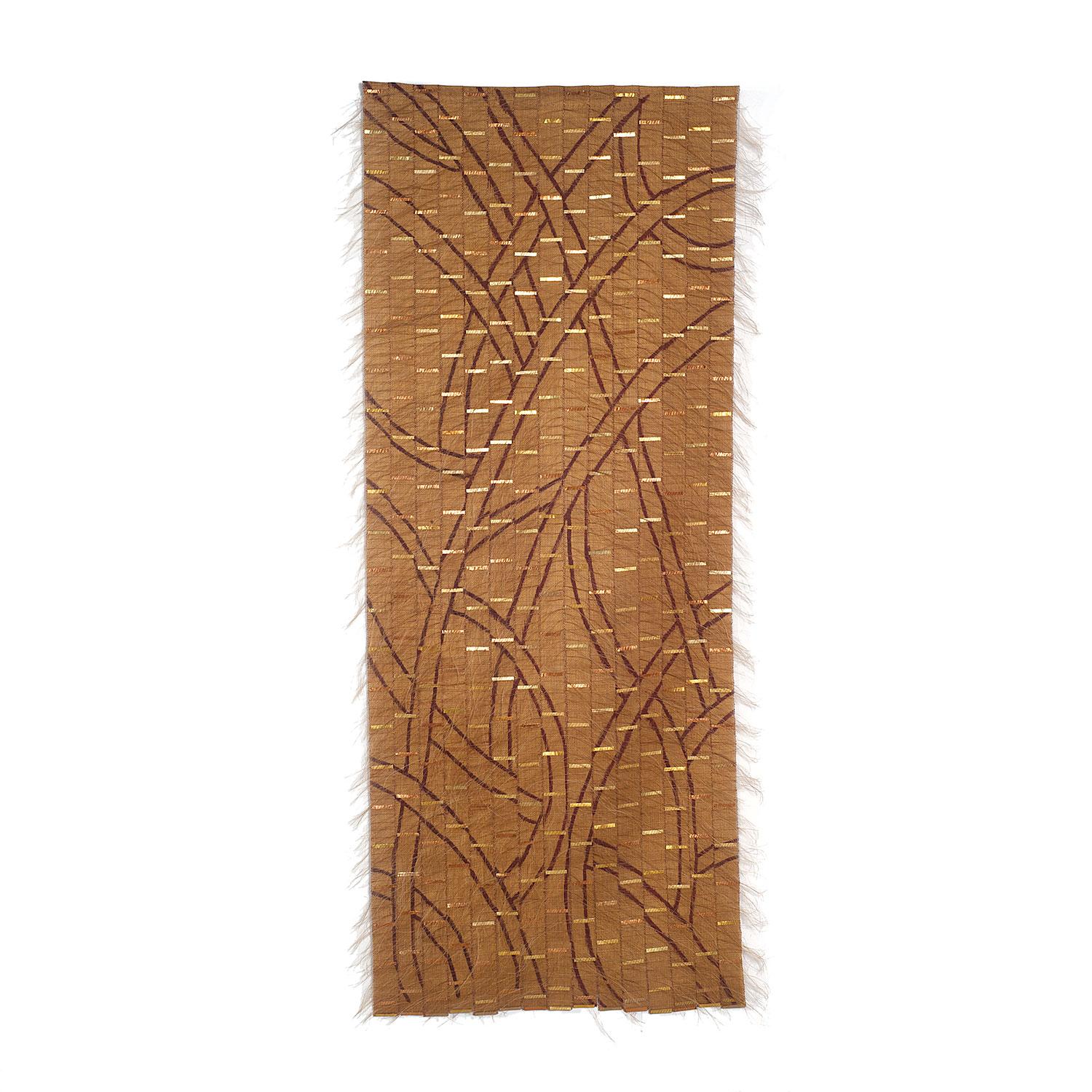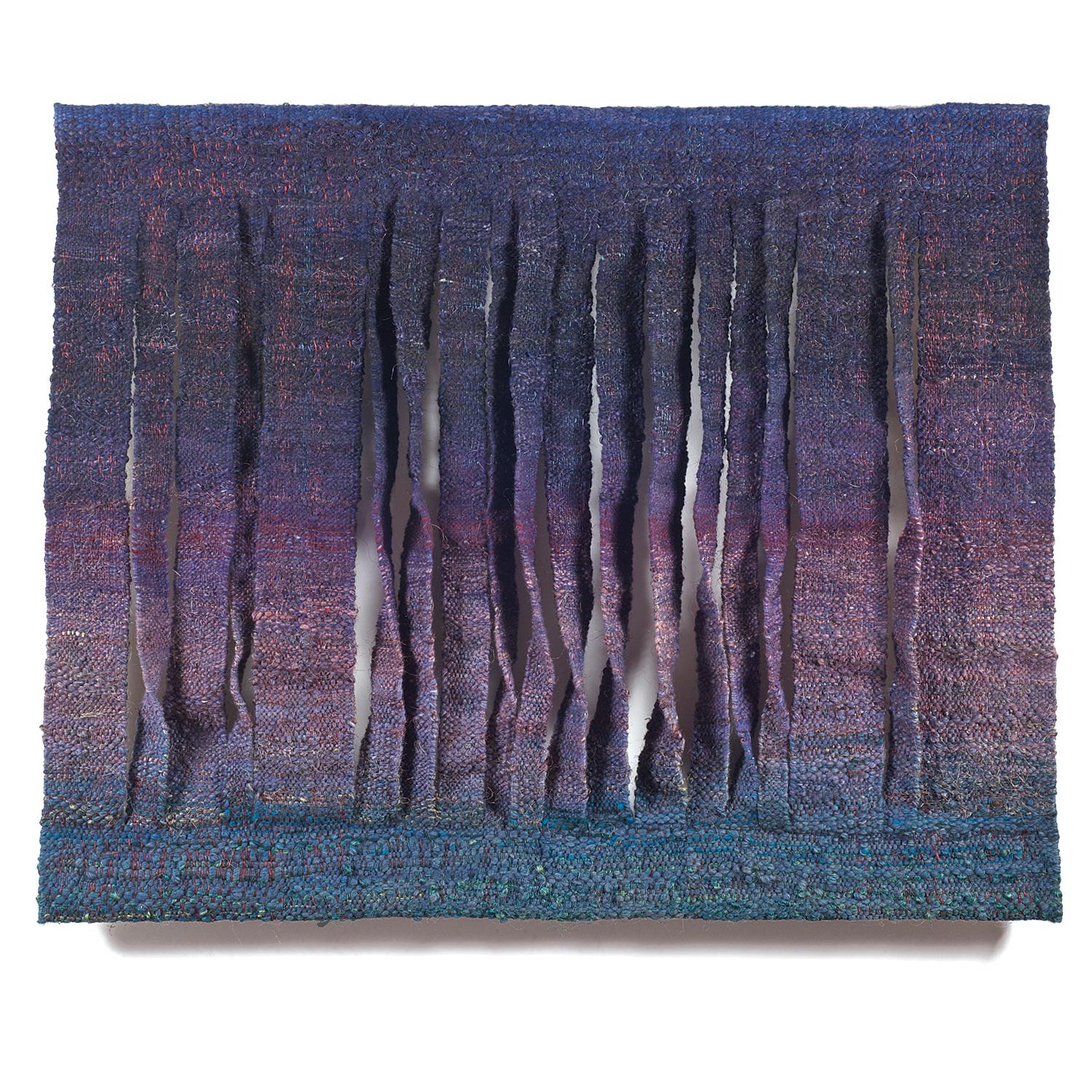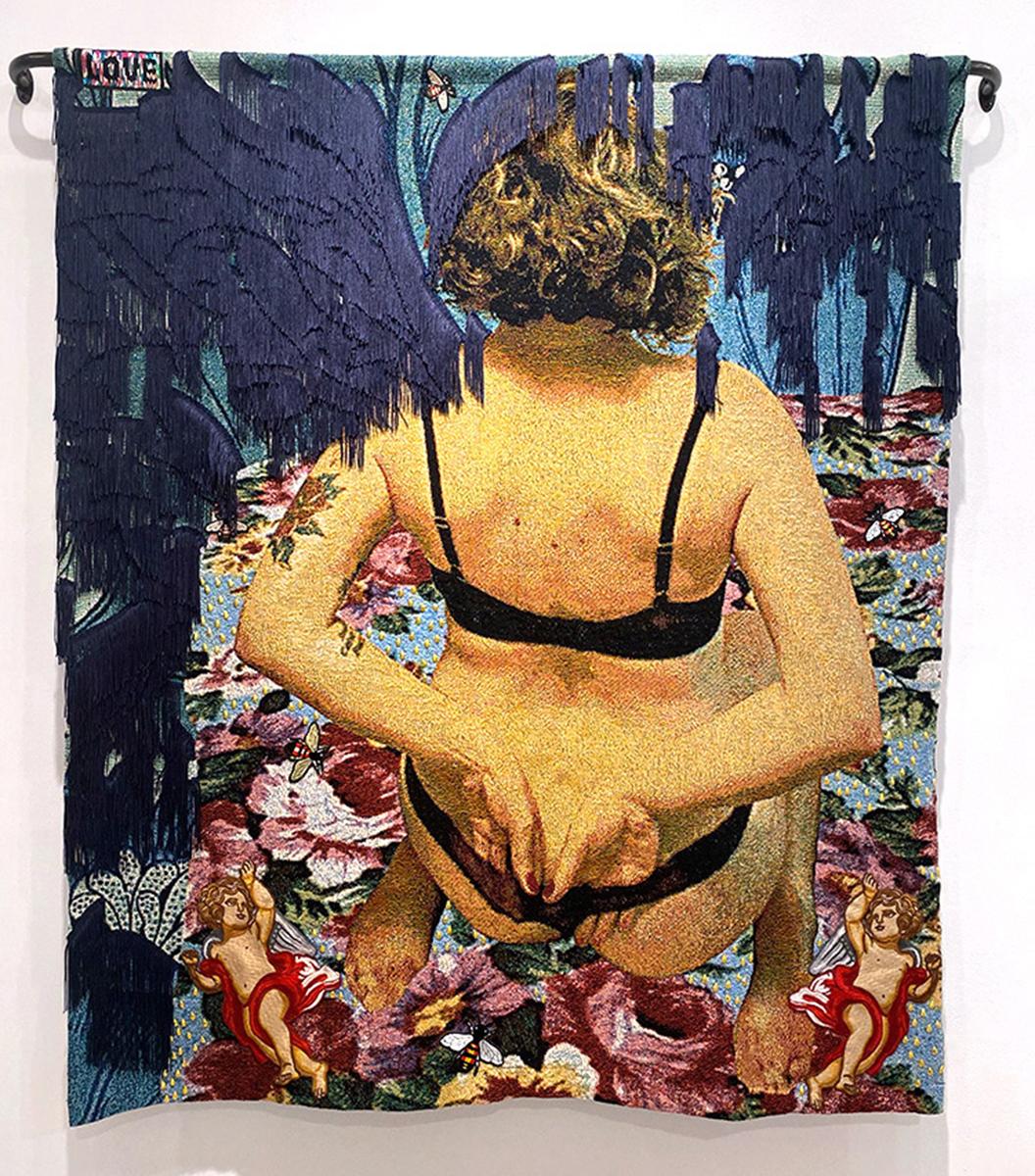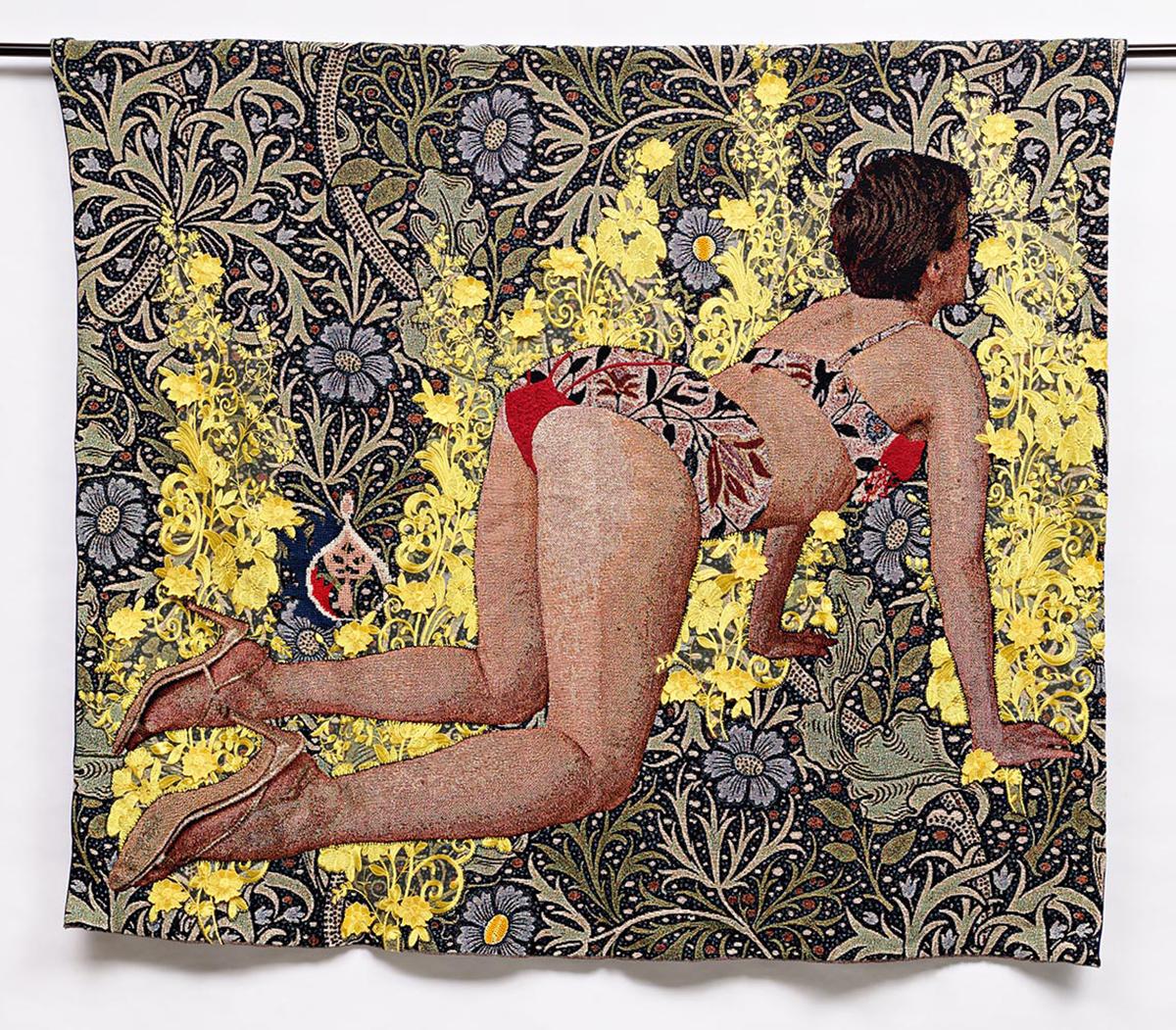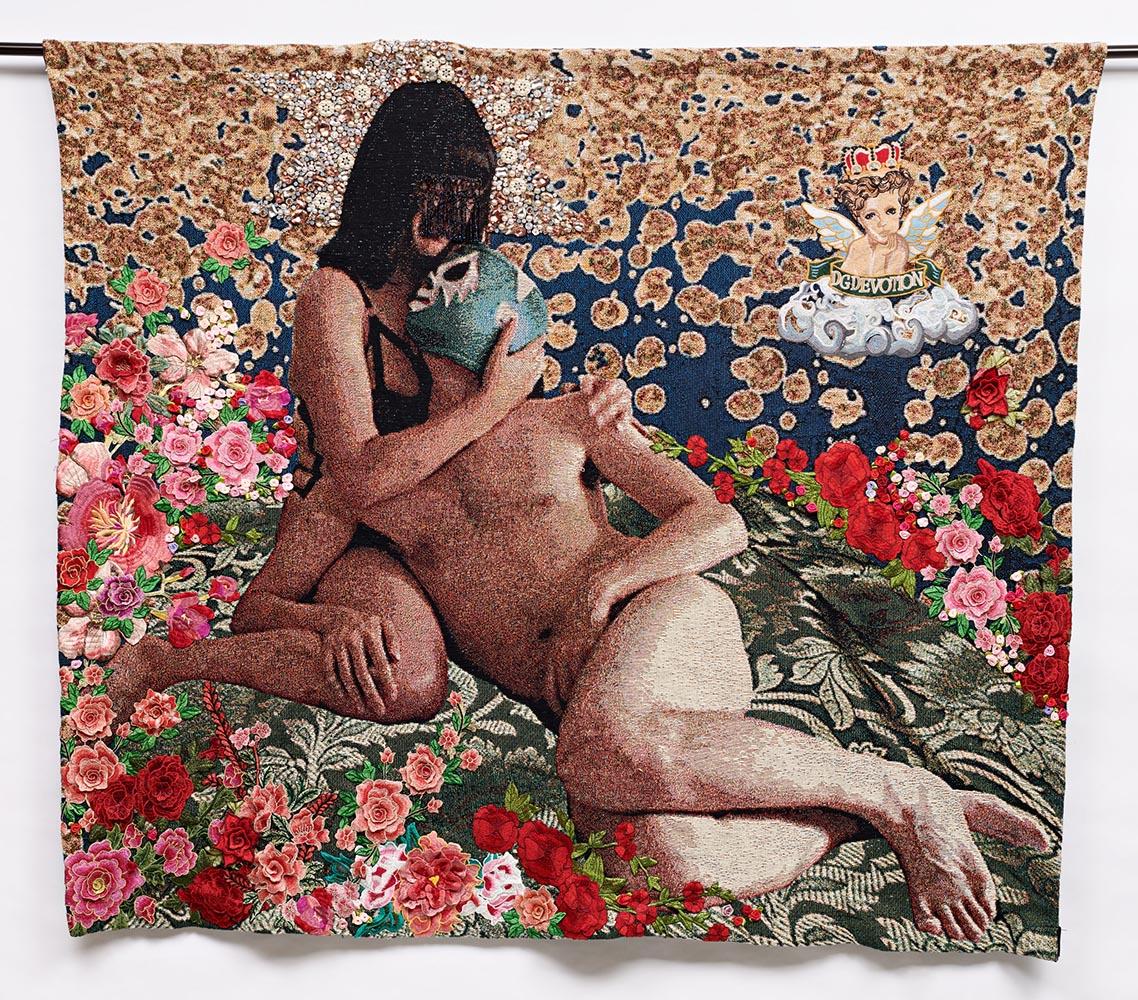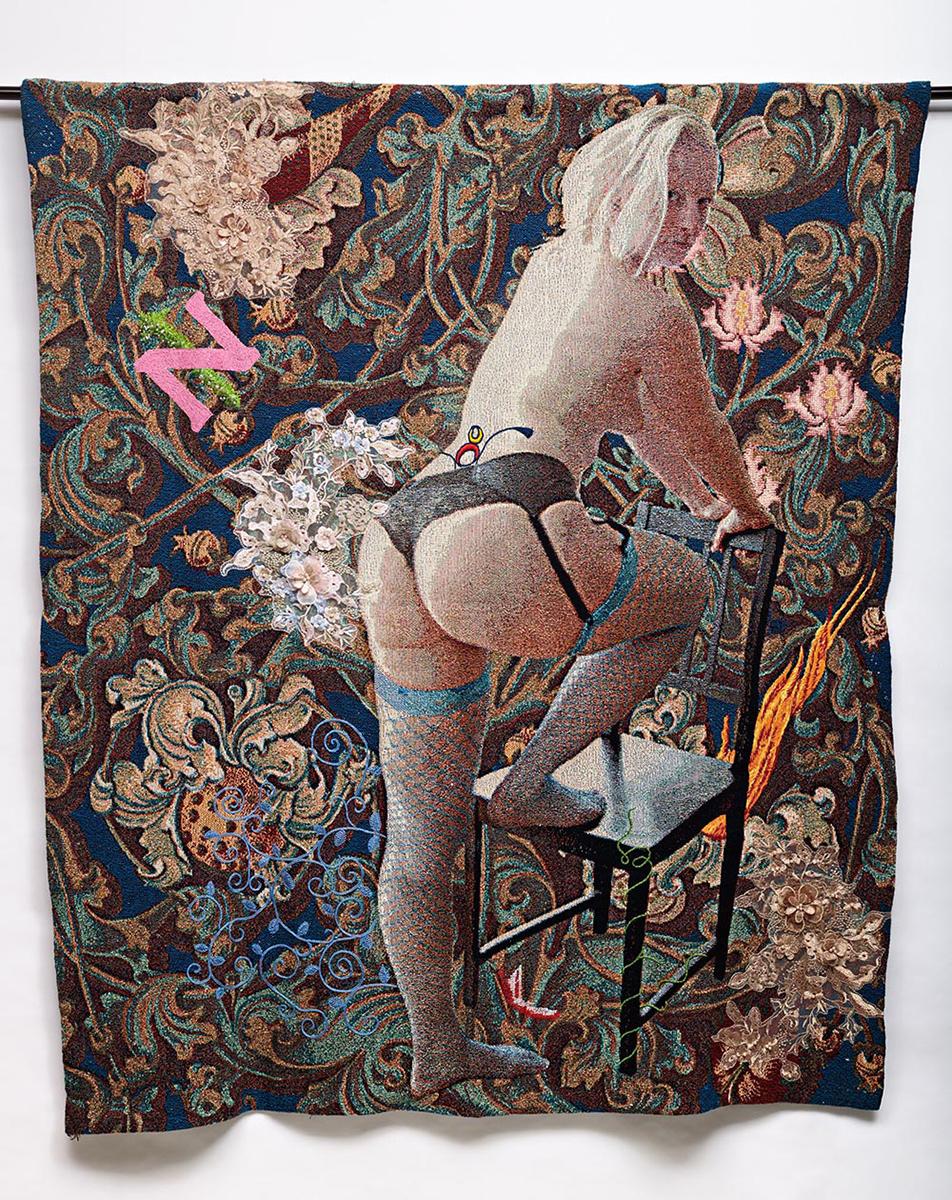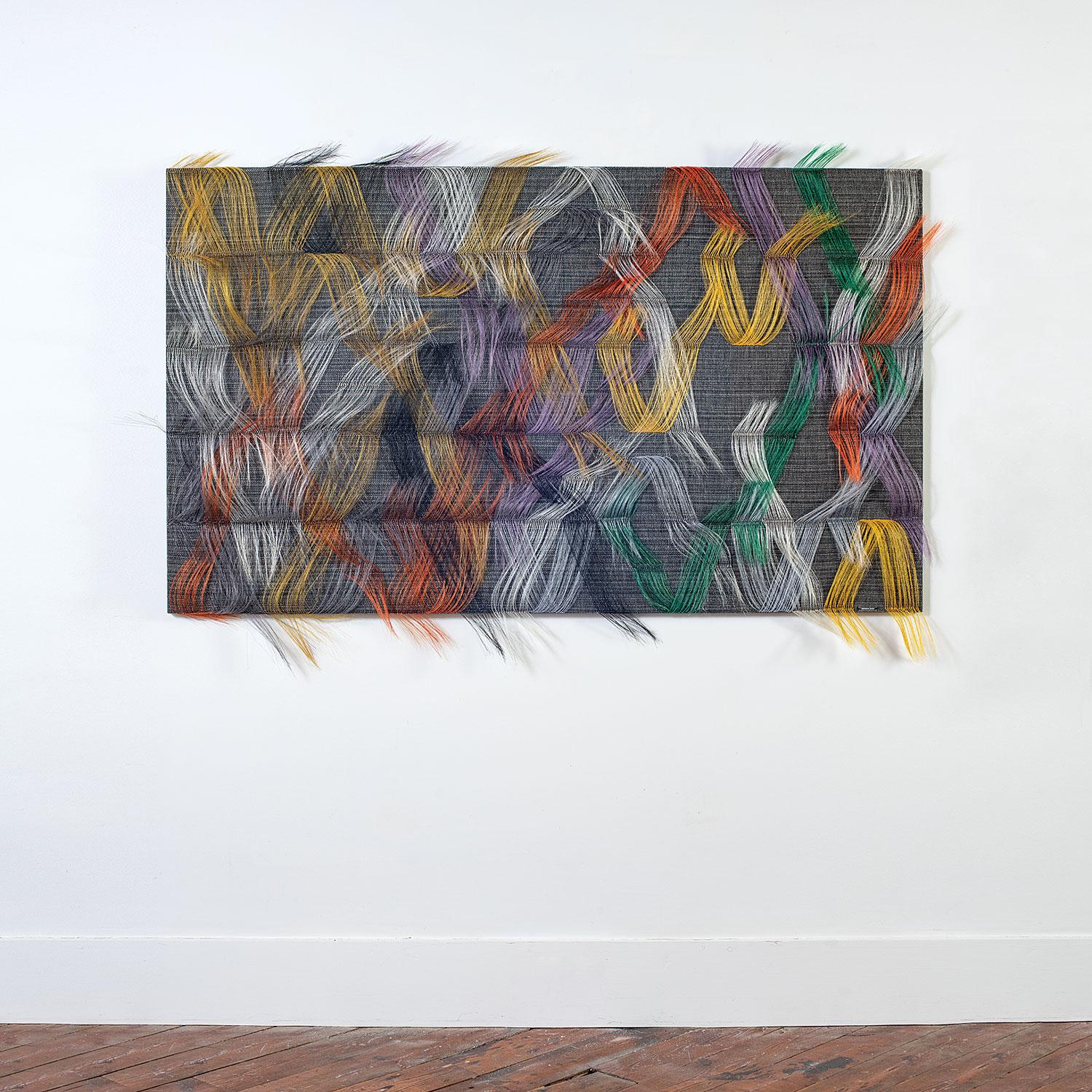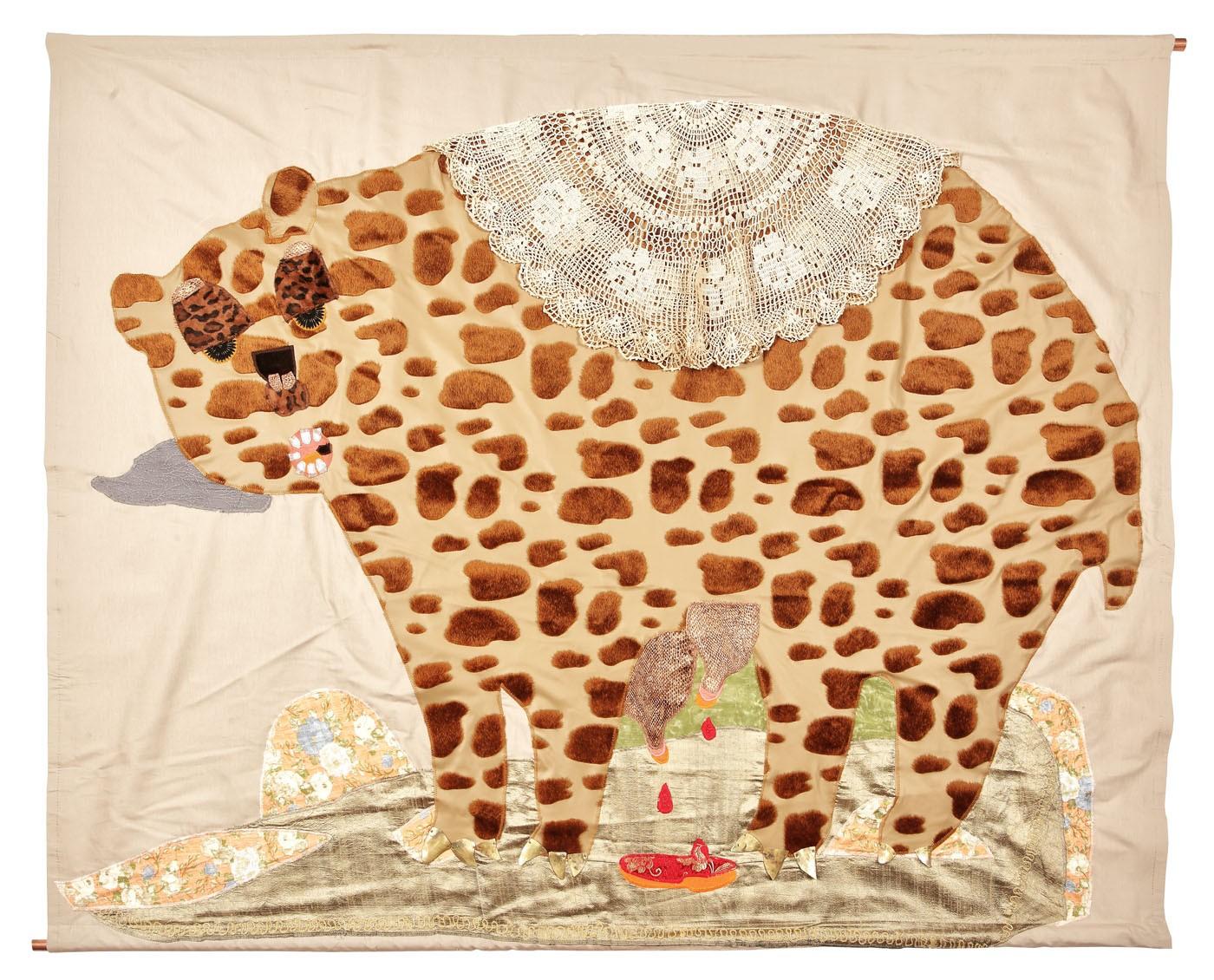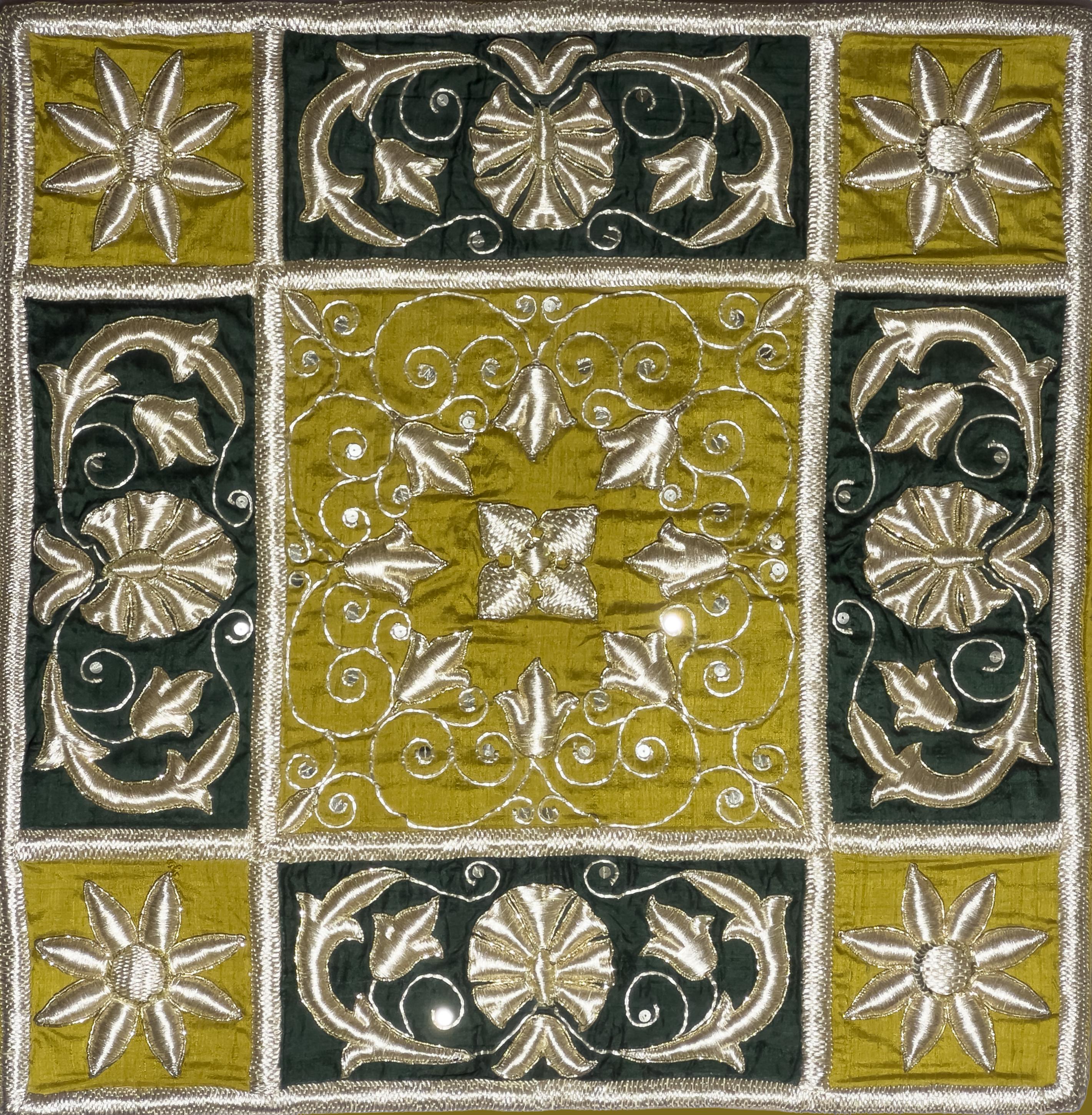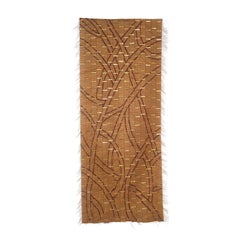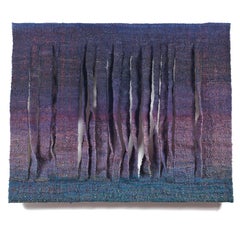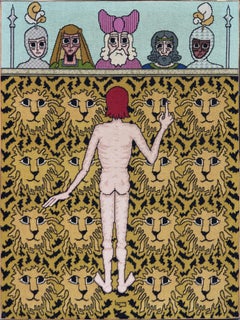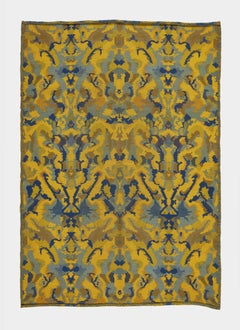
Tapestry (1920s textile work) by Herta Ottolenghi Wedekind
View Similar Items
1 of 4
Herta Ottolenghi WedekindTapestry (1920s textile work) by Herta Ottolenghi Wedekind1920 - 1930
1920 - 1930
About the Item
You May Also Like
- Landscape Transformed, Contemporary Abstract Tapestry, Textile Wall SculptureBy Adela AkersLocated in Wilton, CTAdela Akers (b. 1933, Santiago de Compostela, Spain) is a Spanish-born textile and fiber artist. She is Professor Emeritus (1972 to 1995) at the Tyler Scho...Category
2010s Abstract Abstract Sculptures
MaterialsMetal, Foil
- Palisades, Contemporary Abstract Textile Wall Sculpture, Woven TapestryLocated in Wilton, CTPalisades, wool and sisal, 55" x 70", 1992. Contemporary Abstract Textile Wall Sculpture, Woven Tapestry. Anna Urbanowicz-Krowacka (b 1938, Poland) gra...Category
1990s Abstract Abstract Sculptures
MaterialsFabric, Textile, Tapestry, Wool, Thread
- Modern Needlepoint Textile Tapestry of the Parable of Daniel in the Lions' DenLocated in Houston, TXModern needlepoint textile tapestry of the Biblical parable of Daniel in the lions' den by Houston artist Robert Lunny. The work features Darius and his a...Category
1960s Abstract Mixed Media
MaterialsTapestry, Textile
- Mathieu Matégot - Sans titre, tapestry, french, modern, abstract, wool, designBy Mathieu MatégotLocated in London, GBMathieu Matégot (1910-2001) Sans titre c.1950s wool tapestry, Manufactura de Tapeçarias de Portalegre 150 x 70 cm signed ‘Matégot’ and with the Manufactura de Tapeçarias de Portalegre monogram (lower right) Price: $11,000 USD Provenance: Barry Friedman Ltd, New York (stock no. BF21324) Notes: Mathieu Matégot was a Hungarian-born French designer, architect and artist. After studying at Budapest's School of Fine Arts in 1929, Matégot travelled across Italy and the USA until settling in Paris in 1931 where he worked as a set designer, window dresser and tapestry maker. Matégot volunteered for the French resistance at the start of the Second World War, only to be captured by the Nazis. A dreadful fate for most, however, it was during his time as a prisoner of war that the artist discovered metalworking techniques (such as Rigitulle) which he later patented and became renowned for. Upon his release, Matégot was awarded French citizenship. After the war, the artist's interest in tapestry was renewed after being introduced to contemporary tapestry revivalist, Jean Lurçat. However, in order to make ends meet, Matégot pursued furniture design; he established a workshop in Paris and dedicated his time to translating the groundbreaking metal techniques into popular handcrafted objects. In 1959, Matégot abandoned furniture design and focused exclusively on his passion for abstract tapestries. He continued his work as a pioneer of French Modern tapestry...Category
1950s Abstract More Art
MaterialsTapestry
- Mathieu Matégot - Castille, tapestry, french, modern, abstract, aubusson, designBy Mathieu MatégotLocated in London, GBMathieu Matégot (1910-2001) Castille c.1950s Aubusson tapestry, Pinton Frères; (probably) unique 156 x 120 cm signed ‘Matégot’ and with the Pinton Frères monogram (lower right); titled, inscribed, numbered and signed (workshop label on the verso) Price: $14,000 USD Provenance: Barry Friedman Ltd, New York (stock no. BF11410) Notes: Mathieu Matégot was a Hungarian-born French designer, architect and artist. After studying at Budapest's School of Fine Arts in 1929, Matégot travelled across Italy and the USA until settling in Paris in 1931 where he worked as a set designer, window dresser and tapestry maker. Matégot volunteered for the French resistance at the start of the Second World War, only to be captured by the Nazis. A dreadful fate for most, however, it was during his time as a prisoner of war that the artist discovered metalworking techniques (such as Rigitulle) which he later patented and became renowned for. Upon his release, Matégot was awarded French citizenship. After the war, the artist's interest in tapestry was renewed after being introduced to contemporary tapestry revivalist, Jean Lurçat. However, in order to make ends meet, Matégot pursued furniture design; he established a workshop in Paris and dedicated his time to translating the groundbreaking metal techniques into popular handcrafted objects. In 1959, Matégot abandoned furniture design and focused exclusively on his passion for abstract tapestries. He continued his work as a pioneer of French Modern tapestry...Category
1950s Abstract More Art
MaterialsTapestry
- Mathieu Matégot - Apollo, tapestry, french, modern, abstract, aubusson, designBy Mathieu MatégotLocated in London, GBMathieu Matégot (1910-2001) Apollo c.1950s Aubusson tapestry, Manufactura de Tapeçarias de Portalegre; edition 3 of 6 142 x 118 cm signed ‘Matégot’ with the Manufactura de Tapeçarias de Portalegre monogram (lower right); titled, inscribed, numbered and signed (workshop label on the verso) Price: $13,000 USD Provenance: Barry Friedman Ltd, New York (stock no. BF19383.3) Notes: Mathieu Matégot was a Hungarian-born French designer, architect and artist. After studying at Budapest's School of Fine Arts in 1929, Matégot travelled across Italy and the USA until settling in Paris in 1931 where he worked as a set designer, window dresser and tapestry maker. Matégot volunteered for the French resistance at the start of the Second World War, only to be captured by the Nazis. A dreadful fate for most, however, it was during his time as a prisoner of war that the artist discovered metalworking techniques (such as Rigitulle) which he later patented and became renowned for. Upon his release, Matégot was awarded French citizenship. After the war, the artist's interest in tapestry was renewed after being introduced to contemporary tapestry revivalist, Jean Lurçat. However, in order to make ends meet, Matégot pursued furniture design; he established a workshop in Paris and dedicated his time to translating the groundbreaking metal techniques into popular handcrafted objects. In 1959, Matégot abandoned furniture design and focused exclusively on his passion for abstract tapestries. He continued his work as a pioneer of French Modern...Category
1950s Abstract More Art
MaterialsTapestry
